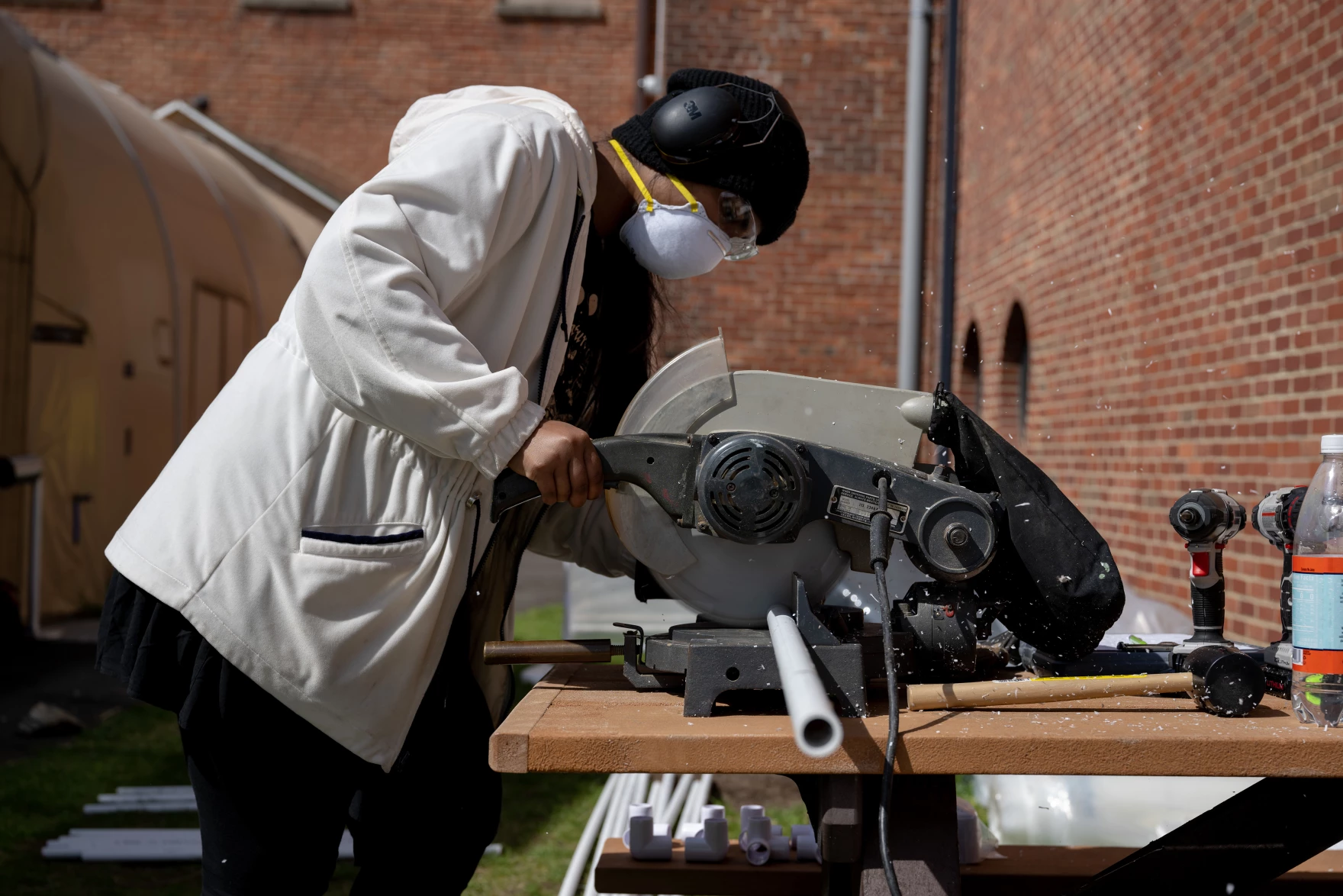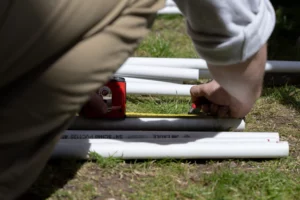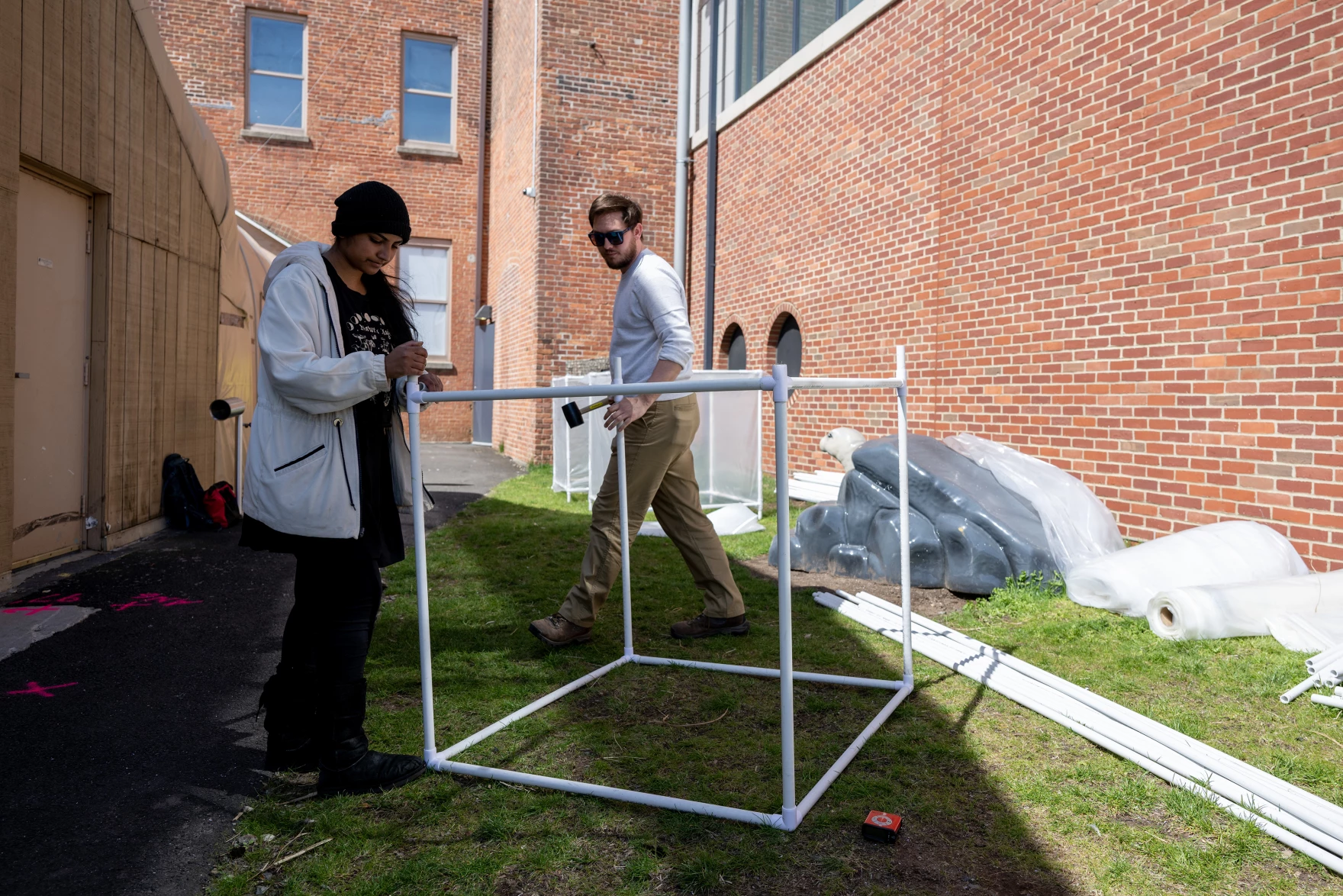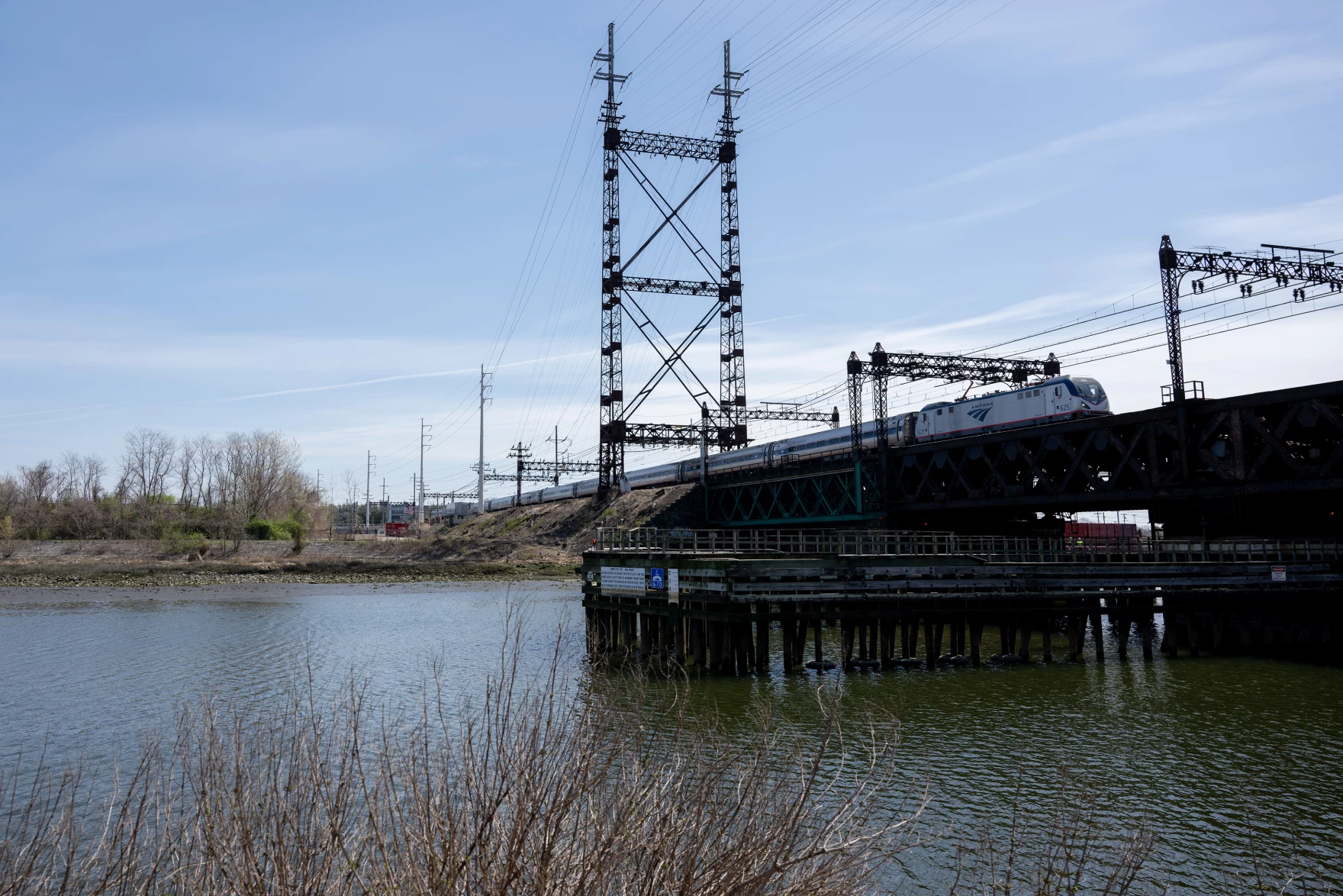An experiment in Connecticut aims to make New England’s salt marshes more resilient

Maritime Aquarium Conservation Project Manager Justin Susarchick, left, and Conservation Research Assistant Rebha Raviraj are with a team of researchers building greenhouses to find out which strains of Spartina Alterniflora, or cordgrass, can survive the region’s warming climate. (Raquel C. Zaldívar / New England News Collaborative)
Employees of the Maritime Aquarium in Norwalk, Connecticut are in an alcove out back by the river, building greenhouses — hammering, sawing and drilling.
“Cutting PVC to shape, cutting greenhouse plastic and assembling these one-meter-volume cubes,” said Justin Susarchick, the aquarium’s projects director. His colleague Rebha Raviraj fires up a power saw and cuts a short piece of PVC pipe.
“And basically that’s to create stilts for the chamber,” Raviraj said. “So we want those raised in the salt marsh to allow water flow. We will also be painting these green so that there are less harsh looking in the marshes.”

Rebha Raviraj uses a power saw to cut PVC pipe behind the the Maritime Aquarium in Norwalk, Conn. The researchers will set up greenhouses at eight salt marshes across Connecticut. (Raquel C. Zaldívar / New England News Collaborative)
Inside the cubes will be many different strains of Spartina Alterniflora — better known as cordgrass.

(Raquel C. Zaldívar / New England News Collaborative)
Dr. Sarah Crosby, the project’s head researcher, said cordgrass is the most important plant in the salt marsh, the one that holds everything together. And salt marshes, in return, hold a lot else together.
“Oh my gosh. So salt marshes are one of the most productive ecosystems on the planet,” Crosby said. Indigenous people have used them to fish, hunt deer and forage for oysters and clams. And salt marshes protect waterside communities from storm damage and beach erosion.
“They’re also tremendous carbon sinks,” she adds. “Salt marshes themselves are storing carbon and absorbing nutrients that would otherwise be negatively impacting the estuary.”
The marshes store about 50 times more carbon than a normal forest, which all gets released back into the air if the salt marsh dies.

Salt marshes behind the the Maritime Aquarium in Norwalk, Conn. (Raquel C. Zaldívar / New England News Collaborative)
“And cordgrass is the plant in the marsh that is the foundation on which all of the other plants are developing,” Crosby said. “So without happy, healthy cordgrass population, the rest of it falls apart.”
Cordgrass is threatened by climate change — it could be drowned by rising sea levels. So across New England, researchers are looking at lots of potential ways to make it more resilient. This experiment is using “assisted gene flow” essentially, introducing better prepared plants.
“So taking organisms from farther south and moving them up here with the expectation that they will deal with warmer temperatures better than the plants that are here currently,” said professor Randall Hughes of Northeastern University.
Hughes is working with the Maritime Aquarium on the study. They’re planting cordgrass from nurseries down South — like the Carolinas or Georgia — in those greenhouses alongside native Connecticut cordgrass.

The research may help others who are working on salt marsh restoration to introduce plants that are more resilient to climate change. (Raquel C. Zaldívar / New England News Collaborative)
“I’m really curious to see if these southern plants actually do better under warming,” Hughes said. “Like, is it really so simple that we can just take some from farther South and move them up here?”
“Some of this is already happening,” Crosby said. She adds it’s easy to think of salt marshes as untouched. But plants are always jumping from place to place, often spread by people. And salt marshes often sit by some of the most developed land in New England.
“Here in Norwalk, you can see the train tracks that have run right through the middle of the harbor,” Crosby said. “But if you take the Metro North up towards Boston, you can see that you’re cutting through salt marsh, actually through most of your journey. And actually a lot of salt marsh historically was lost because of our development of infrastructure, like train tracks and the highways.”
New England has more than 100,000 acres of salt marsh. But NASA estimates the world has lost more than 560 square miles of salt marsh over the last twenty years — the equivalent of about two soccer fields every hour.

An Amtrak train passes over the Norwalk River near salt marsh areas. (Raquel C. Zaldívar / New England News Collaborative)
“There’s a growing understanding of how important these habitats are,” Crosby said. “And the better we can make those restoration activities happen, then these marshes are going to be around for generations to come. We just have to give them the tools and the genetics that they need to be able to do it.”
Researchers will put greenhouses out in May at eight salt marshes in Connecticut and monitor them throughout the summer. Crosby said they expect to see some results this fall.
This story, reported by WSHU’s Davis Dunavin, is part of the New England News Collaborative’s 2023 Earth Week series on climate change solutions in the region.
